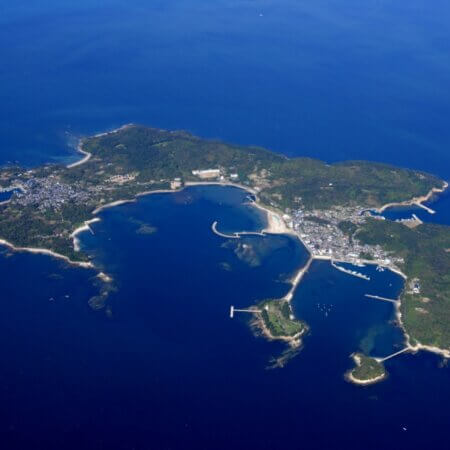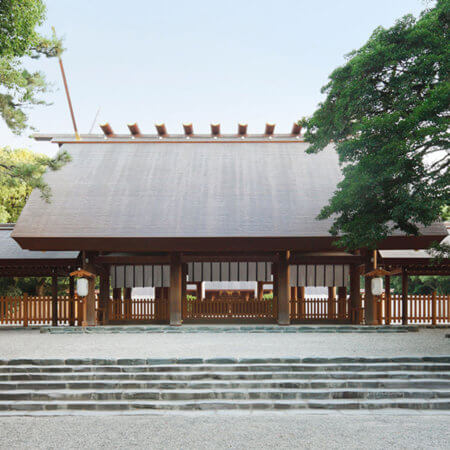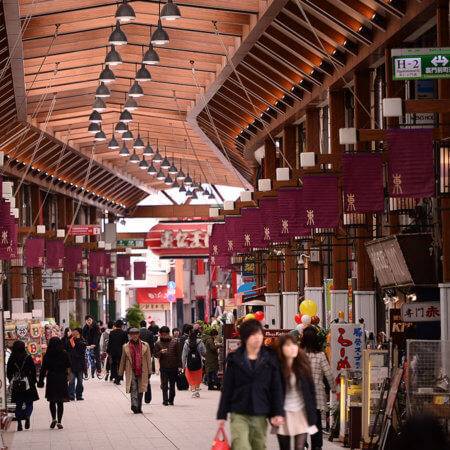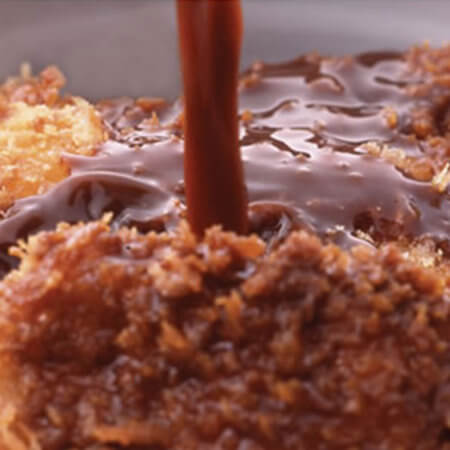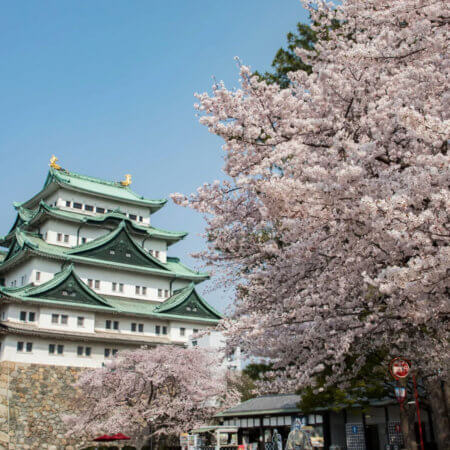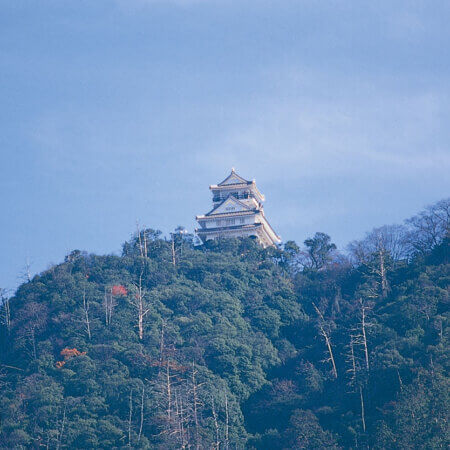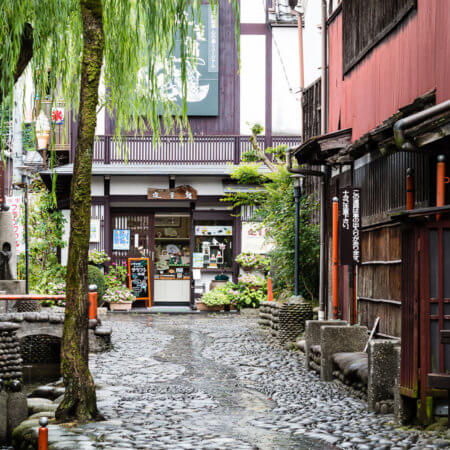Drawing on history and tradition, the beauty of Japan at 【Tokugawa Park】
- PREFECTURE
- AICHI
- INTEREST
- HISTORY
- TAGS
- Tokugawa Park
CONTENT
About the History of Tokugawa Park, Continuing from the Edo Period
Located in the Higashi Ward of Nagoya City, Aichi Prefecture, “Tokugawa Park” is said to originate from Mitsutomo Tokugawa, the second feudal lord of the Owari Domain and head of the Three Tokugawa Houses, who moved to the Ozone Residence, a retirement home he built himself, in the 8th year of Genroku (1695).
The estate at that time spanned about 130,000 tsubo (approximately 44 hectares), and it is said that the park’s springs floated sixteen boats, illustrating its grandeur. After Mitsutomo’s death, the land was transferred to the Naruse, Ishikawa, and Watanabe families, senior retainers of the Owari Domain. However, from 1889 (Meiji 22), it returned to the hands of the Owari Tokugawa family and became their residence.
In 1931 (Showa 6), the city of Nagoya received a donation of the mansion and park from the nineteenth head of the family, Yoshiaki Tokugawa, and after renovation and repairs, it was opened to the public as “Tokugawa park” the following year. However, most of the park was destroyed in the Nagoya air raids in 1945 (Showa 20). Since then, it had been used as a general park until it was renewed as a Japanese park in the autumn of 2004 (Heisei 16).
On October 7, 2014 (Heisei 26), several landmarks within the park were designated as Registered Tangible Cultural Properties of Japan. The following content will introduce each of these registered landmarks.
The Charm of the Numerous Registered Tangible Cultural Properties within the park





“Tokugawa Park” is home to several structures designated as Registered Tangible Cultural Properties on October 7, 2014: “Tokugawa Park’s Black Gate, Fence, and Tsuribei Well,” “Tokugawa Park Side Longhouse,” and “Sosan Villa.”
“Tokugawa Park’s Black Gate” is a thick, black-painted, split-wood Yakui gate located to the west of “Tokugawa Park,” serving as the grand entrance of the former Ozone residence of the Owari Tokugawa family, embodying an elegant and dignified charm.
The “Fence” is a wooden fence located around the perimeter of Tokugawa Park. It showcases the original appearance of the time of construction, contributing to the historical landscape of the surrounding buildings.
The “Tsuribei Well” is a stone well with a wooden gabled cedar shingle roof, similar to the fence, enhancing the historical landscape of the area.
“Tokugawa Park Side Longhouse” is a hipped-roof building adjacent to “Tokugawa Park’s Black Gate,” maintaining the legacy of the former Ozone residence of the Owari Tokugawa family together with the Black Gate and the fence.
“Sosan Villa” is located in the northwest of Tokugawa Park and is a modern Japanese-style building that, while adopting traditional Japanese architectural styles, incorporates features such as a central corridor and high-ceilinged Japanese-style rooms. In 1937 (Showa 12), the “Nagoya Pan-Pacific Peace Exposition” was held in Nagoya City. The “Japanese Pavilion” was constructed within the exposition grounds as the guesthouse, and after the exposition, it was donated to Nagoya City and relocated to Tokugawa Park, becoming “Sosan Villa.” Since the autumn of 2004 (Heisei 16), it has been utilized as a tea room.
Throughout the year, you can enjoy trees and flowers of every season


The official website of “Tokugawa Park” periodically introduces the state of trees and flowers in the park as “The Four Seasons of Tokugawa Park,” showcasing the park’s varying faces with each season. In the “Recent Photo Gallery” section, trees and flowers that are in bloom for the month are introduced with photos on the first day of each month.
Along with the “Recent Photo Gallery,” how about checking the “Current Recommended Flowers”? This section not only highlights trees and flowers but also the state of the park, which is featured on various official social media platforms. The key point is that by using the “Recent Photo Gallery” together, you can see what is currently in bloom. Moreover, the website introduces a wide range of information from opening and closing times to events in the park, so be sure to check it out before your visit.


There’s also a page themed around “Seasons.” In “Flower Calendar,” instead of monthly, trees and flowers are introduced “by season” such as early spring, spring, summer, autumn, and winter.
Additionally, there’s “Seasonal Journey,” which introduces the “Flower Calendar” in PDF format for each season. Since it is presented along with a map of the park, downloading the “Seasonal Journey” and exploring the park might be a wonderful way to enjoy your visit.
Throughout the Year, Enjoy the Seasonal Trees and Flowers


The official website of “Tokugawa Park” features “The Seasons of Tokugawa Park,” showcasing the various faces of the park’s trees and flowers as they change with the seasons. The “Recent Photo Gallery” introduces, through photographs, the trees and flowers that are in their prime each month on the first day of the month.
Along with the “Recent Photo Gallery,” why not check out the “Current Flower Recommendations”? This section, along with trees and flowers, introduces the state of the park on the official SNS, highlighting what’s currently recommended. By using it together with the “Recent Photo Gallery,” you can see what’s currently in bloom, a key feature! Additionally, from opening and closing times to events within the park, a wide range of information is introduced, so be sure to check it out before your visit.
There are also pages themed around the “Seasons.” “Flower Calendar” introduces trees and flowers not by month, but by “season” – early spring, spring, summer, autumn, and winter.
Furthermore, there’s “Seasonal Journey,” which introduces the “Flower Calendar” in PDF format. Since it’s introduced along with a map of the park, why not download “Seasonal Journey” and explore the park?
AICHI
-
![【Laguna Ten Bosch】 Enjoy playing, eating, and shopping at this large-scale resort overlooking Mikawa Bay!]()
【Laguna Ten Bosch】 Enjoy playing, eating, and shopping at this large-scale resort overlooking Mikawa Bay!
-
![【Sakushima】A Charming Island of Healing and Art Floating in Mikawa Bay]()
【Sakushima】A Charming Island of Healing and Art Floating in Mikawa Bay
-
![Meet Japan’s Largest Pool and Approximately 500 Species, 50,000 Marine Creatures]()
Meet Japan’s Largest Pool and Approximately 500 Species, 50,000 Marine Creatures
-
![【Atsuta Jingu (Atsuta Shrine)】It receives about 6.5 million visitors annually! A highly respected shrine since ancient times]()
【Atsuta Jingu (Atsuta Shrine)】It receives about 6.5 million visitors annually! A highly respected shrine since ancient times
-
![【Osu Shopping Street】 The most energetic shopping district in Japan, with around 1,200 shops]()
【Osu Shopping Street】 The most energetic shopping district in Japan, with around 1,200 shops
-
![【Yabaton Yabacho Main Store】The go-to place for Nagoya’s famous Miso Katsu]()
【Yabaton Yabacho Main Store】The go-to place for Nagoya’s famous Miso Katsu
history
-
![【Atsuta Jingu (Atsuta Shrine)】It receives about 6.5 million visitors annually! A highly respected shrine since ancient times]()
【Atsuta Jingu (Atsuta Shrine)】It receives about 6.5 million visitors annually! A highly respected shrine since ancient times
-
![【Nagoya Castle】A Castle with Deep Connections to Oda Nobunaga and Tokugawa Ieyasu]()
【Nagoya Castle】A Castle with Deep Connections to Oda Nobunaga and Tokugawa Ieyasu
-
![【Inuyama Castle】Japan’s Oldest Surviving Castle Tower]()
【Inuyama Castle】Japan’s Oldest Surviving Castle Tower
-
![Watch from the stands as 1300 years of tradition unfold at the【Kiso River Ukai】]()
Watch from the stands as 1300 years of tradition unfold at the【Kiso River Ukai】
-
![The Headquarters of National Unification Surrounded by Nature【Gifu Castle】]()
The Headquarters of National Unification Surrounded by Nature【Gifu Castle】
-
![【Gujo Hachiman】A castle town known as the “Little Kyoto of Oku-Mino” with clear streams and famous spring water]()
【Gujo Hachiman】A castle town known as the “Little Kyoto of Oku-Mino” with clear streams and famous spring water


